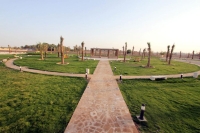Search
Recommended search results

The Arish of King Abdulaziz is one of the historical landmarks located in Al-Selmiyah Center in Al-Saih, in Al-Kharj Governorate , Riyadh Province , in the central region of the Kingdom of Saudi Arabia. It was built in 1919 to receive the guests and visitors of the Founding King Abdulaziz Bin Abdulrahman Al Saud at the time. History of the Arish of King Abdulaziz The Arish of King Abdulaziz was established during the reign of the Founding King Abdulaziz Bin Abdulrahman Al Saud in 1919 at the fa...